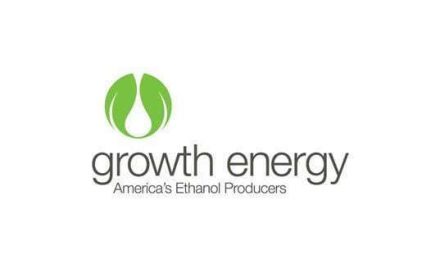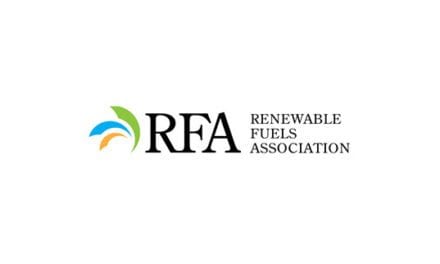Global Crude Supplies Remain at Risk
- Global oil demand expected to near 100 million barrels per day
- Traditional crude oil suppliers less reliable than in the past
- Observers looking for $150 crude oil
- Domestic natural gas production reaches a record.
Sincerely,
Alan Levine, Chairman
Powerhouse
(202) 333-5380
The Matrix
The Department of Energy has projected global oil demand to reach 99.5 million barrels per day this year, notwithstanding a sharp drop in Chinese demand. Curtailed shipments from Russia are pushing Europe to alternative fuels, supporting prices this winter.
One US financial house supports the idea of higher prices ahead, reflecting a failure of natural gas and renewables to provide enough supply despite the increase in U.S. crude oil produced.
Working through the number brings us to a greater reliance on OPEC’s members for supply stability. This proposition is not a certainty. The group agreed on a small, 100,000 barrels-per day cut in crude oil output earlier this month. Controls imposed on Russian crude oil exports by the EU have cut Russia’s influence in OPEC+ and severely limited the group’s effectiveness as a supply monitor.
Hope for new crude oil supply from Iran appears to have faded. A revised deal, replacing the 2015 nuclear arrangement could bring one to two million barrels of oil to global markets. A variety of issues remain in contention. Iran wants assurances that a renewed deal will continue sanctions relief even if a new U.S. president were to revoke the deal. Iran also wants investigation of older secret nuclear activities.
Barriers to new crude oil supply are formidable. Lack of OPEC reliability, the apparent failure to secure a new deal with Iran, and spillover from natural gas movements as LNG militate against lower prices. These conditions make the U.S. bank’s $150 crude oil objective plausible.
Supply/Demand Balances
Supply/demand data in the United States for the week ended September 9, 2022, were released by the Energy Information Administration.
Total commercial stocks of petroleum rose 5.5 million barrels during the week ended September 9, 2022.
Commercial crude oil supplies in the United States increased by 2.4 million barrels from the previous report week to 429.6 million barrels.
Crude oil inventory changes by PAD District:
PADD 1: Plus 1.5 million barrels to 8.4 million barrels
PADD 2: Plus 0.6 million barrels to 107.8 million barrels
PADD 3: Plus 1.2 million barrels to 242.5 million barrels
PADD 4: UNCH at 22.8 million barrels
PADD 5: Down 0.8 million barrels to 48.2 million barrels
Cushing, Oklahoma, inventories were down 0.2 million barrels from the previous report week to 24.6 million barrels.
Domestic crude oil production was up UNCH barrels per day from the previous report week at 12.1 million barrels daily.
Crude oil imports averaged 5.792 million barrels per day, a daily decrease of 988,000 barrels. Exports increased 82,000 barrels daily to 3.515 million barrels per day.
Refineries used 91.5% of capacity; 0.6 percentage points higher than the previous report week.
Crude oil inputs to refineries increased 93,000 barrels daily; there were 16.022 million barrels per day of crude oil run to facilities. Gross inputs, which include blending stocks, rose 107,000 barrels daily to 16.416 million barrels daily.
Total petroleum product inventories rose by 3.1 million barrels from the previous report week, rising to 795.5 million barrels.
Total product demand decreased 578,000 barrels daily to 19.313 million barrels per day.
Gasoline stocks decreased 1.8 million barrels from the previous report week; total stocks are 213 million barrels.
Demand for gasoline fell 233,000 barrels per day to 8.494 million barrels per day.
Distillate fuel oil stocks increased 4.2 million barrels from the previous report week; distillate stocks are at 116.0 million barrels. EIA reported national distillate demand at 3.132 million barrels per day during the report week, a decrease of 492,000 barrels daily.
Propane stocks increased by 3.8 million barrels from the previous report week to 77.9 million barrels. The report estimated current demand at 515,000barrels per day, a decrease of 555,000 barrels daily from the previous report week.
Natural Gas
Prices in the futures markets tend to react to immediate news. A bearish development usually pushes price lower notwithstanding longer-term bullish circumstances. This happened last week, when spot natural gas futures prices tumbled 16% from their recent $9.24 high to $7.64. Nearby support held. If it fails, $7.60 is next support for spot futures prices.
And bearish news did help explain the drop in price. Domestic natural gas output was near a monthly record, and prices fell globally. The months-long outage of Freeport, Louisiana LNG for export has added to domestic supply.
The natural gas market is nearing bear territory, but sellers should be wary. Winter is approaching with early forecasts of frigid weather. Moreover, U.S. consumption of natural gas is expected to increase in all end-use sectors in 2022. The Energy Information Administration expects consumption to increase 3.6 Bcf/d this year from 2021. Gas use would reach 86.6 Bcf/d, a new record.
Demand for natural gas in the electric power sector increased because of limitations imposed on coal-fired facilities and more degree day generation. Coal continues under pressure because of environmental concerns. Inventories of coal were at their lowest since 1978 in September, 2021. Stockpiles of 80 million tons were nearly as small as in March 1978 when only 77 million tons were in storage. Retirements of coal-fired plants and lower coal usage should add to natural gas demand this year.
Bullish price conditions are growing. In Europe, Russia’s Gazprom cut supplies over Nord Stream pipeline indefinitely. This is latest move in the EU’s efforts to reduce reliance on Russian gas. And some success has been had. The EU imported 40% of its gas from Russia before the Ukrainian invasion. Pipeline imports to Europe now account for 9%. LNG from the US, Norway and Qatar have helped offset the reduction.
According to the EIA:
Net injections [of natural gas] into storage totaled 77 Bcf for the week ended September 9, compared with the five-year (2017–2021) average net injections of 82 Bcf and last year’s net injections of 78 Bcf during the same week. Working natural gas stocks totaled 2,771 Bcf, which is 354 Bcf (11%) lower than the five-year average and 223 Bcf (7%) lower than last year at this time.
The average rate of injections into storage is 5% lower than the five-year average so far in the refill season (April through October). If the rate of injections into storage matched the five-year average of 10 Bcf/d for the remainder of the refill season, the total inventory would be 3,291 Bcf on October 31, which is 354 Bcf lower than the five-year average of 3,645 Bcf for that time of year.
Was this helpful? We’d like your feedback.
Please respond to [email protected]
Powerhouse Futures & Trading Disclaimer
Copyright 2022 Powerhouse Brokerage, LLC, All rights reserved










